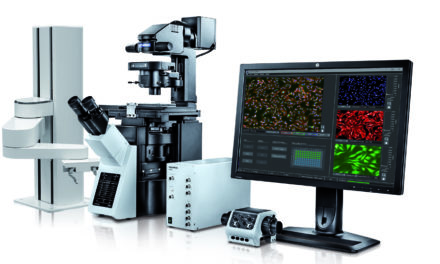Summary
Digital pathology is becoming increasingly accessible for mid-sized and community hospital labs, moving beyond its former foothold in academic centers. By implementing phased plans, exploring cost-effective scanners, and utilizing cloud-based storage, these labs can successfully adopt digital workflows. Tips for planning validation studies and managing pathologist resistance are also crucial for seamless integration.
Key Takeaways
- Digital pathology is now feasible for mid-sized labs, with cost-effective implementation strategies.
- Phased implementation plans facilitate gradual adoption of digital workflows.
- Affordable scanner options and cloud-based storage are key components.
- Conducting validation studies is crucial for successful implementation.
- Managing pathologist resistance is essential for smooth transitions.
Digital pathology has traditionally been associated with large academic institutions, but recent advancements have made it accessible for mid-sized and community hospital labs. These labs can now implement digital workflows without overwhelming their budgets, thanks to an array of affordable technologies and strategies specifically tailored for them.
A phased implementation approach serves as an effective strategy. Labs can start small by integrating digital solutions into a specific subset of histopathology tasks before expanding into additional areas. This incremental adoption allows for smoother integration and adjustment to the new digital workflows, minimizing disruptions to daily operations.
Cost-effective digital scanners have played a crucial role in this shift. The market offers a range of compact and less expensive scanners suitable for smaller operations, delivering reliable image capture at a lower entry cost. These scanners provide the essential functionality needed for digital pathology while remaining budget-conscious.
Cloud-based storage solutions are another important component of affordable digital pathology. Rather than investing heavily in in-house server infrastructure, labs can leverage cloud-based platforms, offering scalable, secure, and cost-effective storage options. This flexibility means that mid-sized labs can expand their storage capacity as their digital imaging requirements grow.
Planning Validation Studies and Overcoming Pathologist Resistance
A critical step in adopting digital pathology is planning and conducting validation studies. Validation ensures that the digital systems are providing results consistent with traditional pathology methods. It is essential for labs to document every step of the process, from scanner accuracy to image quality assessments, aligning closely with regulatory requirements such as those suggested by the College of American Pathologists and the Clinical and Laboratory Standards Institute.
Thorough validation not only confirms the new system’s accuracy but also aids in gaining approval from regulatory bodies, ensuring compliance and enhancing trust in the digital overhaul. Providing comprehensive training based on validation results further facilitates pathologist engagement and acceptance.
Resistance from pathologists unfamiliar with digital tools can pose a significant challenge. Addressing this resistance involves demonstrating the practical benefits of digital workflows, such as enhanced efficiency, improved accuracy, and easier collaboration. Tailored training sessions and workshops can help to keep pathologists engaged and foster a more positive attitude towards digital transformation.
It is important for laboratory leaders to openly communicate the vision and benefits of going digital. Highlighting success stories and case studies from similar institutions can provide a clear roadmap, reinforcing the value digital pathology can bring.
In summary, mid-sized and community hospital labs now have viable pathways to embrace digital pathology. With planned phased implementation, investment in affordable technology, and a focus on compliance and staff engagement, these labs can navigate the digital transformation with confidence and precision, ultimately enhancing the quality of patient care they provide.





